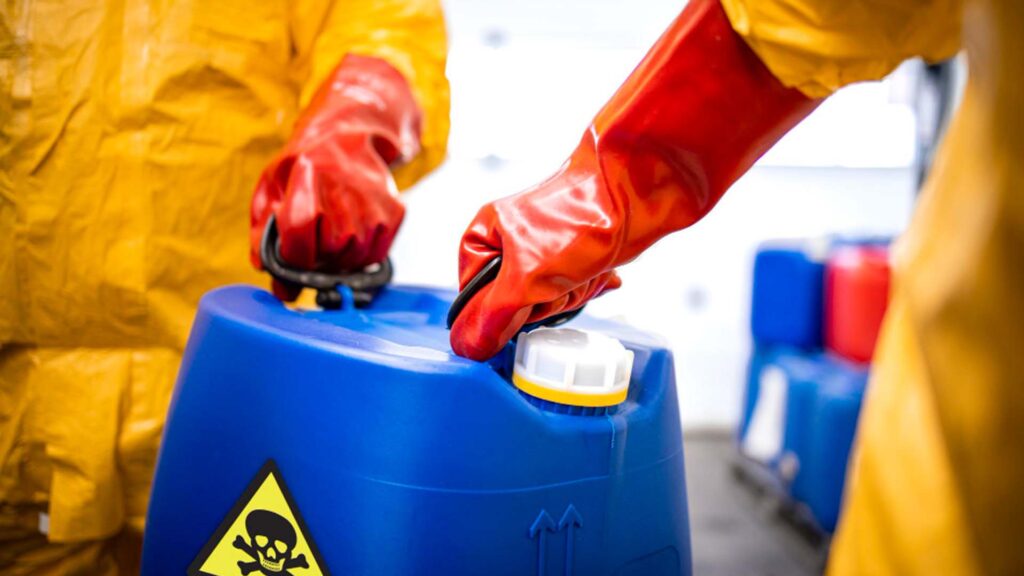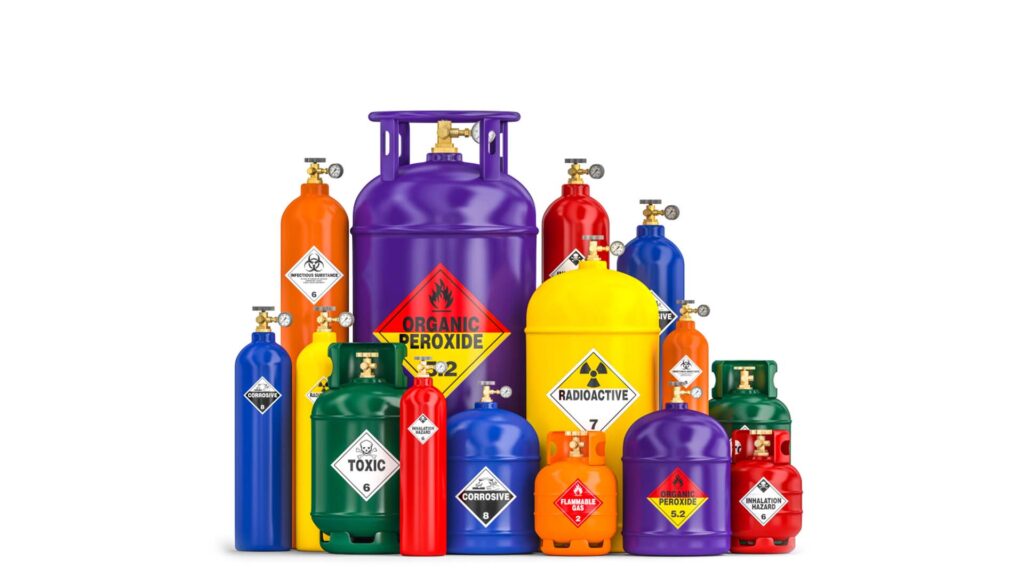Could Goods be Dangerous? Too Dangerous? Could it harm Lives and the Environment? The transportation of dangerous goods requires special attention and care to ensure the safety of people, property, and the environment. From flammable substances and corrosive materials to toxic chemicals and radioactive substances, dangerous goods pose unique risks that must be properly managed. In this blog, we will delve into the world of dangerous goods packing, exploring its importance, regulations, and best practices to safeguard lives and mitigate potential hazards.
Understanding Dangerous Goods Packing
Is packing Dangerous Goods necessary? Of course, it is. Dangerous goods packing refers to the packaging and preparation of hazardous materials for transportation. It involves selecting appropriate packaging materials, designing packaging configurations, and following specific regulations and guidelines to ensure the safe containment and handling of dangerous goods throughout the supply chain. Proper packing is essential to prevent leaks, spills, explosions, and other incidents that can lead to injuries, environmental damage, and property destruction.
It is important to note that the specific causes for a material to be considered dangerous may vary depending on regulatory frameworks, industry standards, and specific hazards associated with the material. Understanding the inherent properties and risks of materials is crucial for appropriate handling, storage, and transportation to mitigate potential dangers and ensure the safety of individuals and the environment.
Types of Dangerous Goods
We can see several types of Dangerous Goods categorized by their nature. Understanding the types of dangerous goods is crucial for proper handling, storage, and transportation to ensure the safety of individuals, property, and the environment. Regulatory authorities and industry organizations provide guidelines and regulations for the handling and transportation of each type of dangerous goods to mitigate risks and ensure compliance with safety standards.
Dangerous goods can be classified into several categories based on their inherent properties and associated risks. The classification system provides a standardized approach to identifying and categorizing different types of dangerous goods. The following are some common types of dangerous goods:
Flammable Substances
These are materials that can ignite and burn easily. Flammable liquids, such as gasoline, solvents, and alcohol, are categorized as Class 3 dangerous goods. Flammable gases, such as propane and butane, fall under Class 2.
Explosives
Explosive materials are substances that can undergo rapid and violent decomposition, resulting in the release of a large amount of energy. This category includes materials such as fireworks, ammunition, and blasting agents. Explosives are classified into different divisions based on their sensitivity and potential hazard level.
Corrosive Substances
Corrosive substances are materials that can cause severe damage or destruction to living tissue or other materials through chemical reactions. Acids and alkalis, such as sulfuric acid or sodium hydroxide, are examples of corrosive substances. They are classified as Class 8 dangerous goods.
Toxic and Infectious Substances
Toxic substances are materials that can cause harm or even death when they enter the body, either through inhalation, ingestion, or skin contact. Examples include certain pesticides, certain chemicals, and some pharmaceutical products. Infectious substances, such as biological materials that contain pathogens, are also classified as dangerous goods due to the potential risk of spreading diseases.
Radioactive Materials
Radioactive materials emit ionizing radiation and can pose health risks if not handled and stored properly. They are categorized into different classes based on their radioactivity levels and potential hazards.
Oxidizing Substances
Oxidizing substances are materials that can provide oxygen and support combustion, thereby increasing the risk of fire. They may intensify or sustain a fire when they come into contact with other flammable or combustible materials. Examples include certain chemicals, peroxides, and chlorates.
Gases Under Pressure
This category includes compressed gases, liquefied gases, and dissolved gases that are stored under pressure. Examples include compressed air, aerosol cans, and liquefied petroleum gas (LPG).
Miscellaneous Dangerous Goods
This category includes various dangerous goods that do not fall into the specific classifications mentioned above but still pose risks during transportation. It may include environmentally hazardous substances, magnetized materials, lithium batteries, and more.
Importance of Dangerous Goods Packing


The importance of proper dangerous goods packing cannot be overstated. Here are some key reasons why packing dangerous goods is crucial:
Protecting Human Safety
Proper packaging ensures the safety of individuals involved in the transportation and handling of dangerous goods. It minimizes the risk of exposure to hazardous substances, reduces the likelihood of accidents or injuries, and provides clear instructions for emergency responders in the event of an incident.
Preventing Environmental Contamination
Adequate packing prevents leaks, spills, and releases of hazardous materials that could contaminate soil, water bodies, and the atmosphere. This helps preserve ecosystems, prevent ecological damage, and safeguard the environment for future generations.
Regulatory Compliance
Dangerous goods packing is subject to strict regulations and guidelines set by regulatory bodies such as the International Air Transport Association (IATA), the International Maritime Organization (IMO), and national regulatory agencies. Compliance with these regulations is essential to meet legal requirements, avoid penalties, and ensure the smooth movement of dangerous goods across borders.
Best Practices in Dangerous Goods Packing


To ensure the safe dangerous goods packing, several best practices should be followed:
Classification and Identification
Properly classify the hazardous materials based on their specific properties and identify them using appropriate hazard labels, placards, and markings. This helps transportation personnel and emergency responders recognize the nature of the hazards and handle them accordingly.
Packaging Selection
Select packaging materials and containers that are compatible with the hazardous substances being transported. Packaging should be designed to withstand the physical and chemical properties of dangerous goods, preventing leaks, spills, or reactions during transportation.
Inner Packaging and Cushioning
Inner packaging like bottles, cans, or drums, should provide a secure and leak-proof enclosure for dangerous goods. Additionally, cushioning materials, such as foam or absorbent materials, should be used to minimize the risk of damage or breakage during transit.
Documentation and Handling Instructions
Provide accurate and detailed documentation, including shipping papers, manifests, and emergency response information. Clear handling instructions and warning labels should be displayed on the packaging to guide handlers and emergency responders in the event of an incident.
Training and Competency
Ensure that personnel involved in the packing, handling, and transportation of dangerous goods receive proper training on hazardous material handling, emergency response procedures, and regulatory compliance. Competent personnel are better equipped to identify risks, mitigate hazards, and respond effectively to emergencies.
Periodic Inspections and Audits
Regularly inspect packaging materials, containers, and labeling to ensure they remain in good condition and comply with regulations. Conduct internal audits to assess compliance with packing procedures and identify areas for improvement.
Conclusion
In conclusion, Dangerous goods packing is a critical aspect of hazardous material transportation. It plays an inevitable role in protecting human safety, preventing environmental contamination, and ensuring regulatory compliance. By following best practices, adhering to regulations, and promoting ongoing training and competency, organizations can contribute to safer and more sustainable transportation of dangerous goods. Let us prioritize the proper packing of hazardous materials to protect lives, preserve the environment, and create a safer future for all.
Galaxy Freight’s expertise in dangerous goods packing and its comprehensive knowledge of international regulations make them the ideal partner for businesses seeking to transport dangerous goods securely. By entrusting your dangerous goods shipments to Galaxy Freight, you can have confidence in their ability to navigate the complexities of dangerous goods packing and ensure the safe transportation of these materials.
For further information or to discuss your specific dangerous goods packing requirements, connect with Galaxy Freight.



